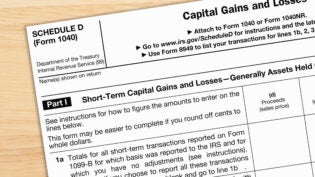Why the New Year is the Best Time to Switch or Start Using Payroll Software
By: Wagepoint

As you reach the final months of any year, there’s the holiday period. (Insert any number of appropriately timed seasonal cliches here.) However, there’s also the process of closing the books on one year of business finances and planning to smooth out any kinks in the year ahead.
For many small businesses, payroll is one kink that always needs a little TLC and reassessment at year-end. It’s not quite as fun as planning for the holidays, but it’s just as essential. It’s also the best time of year to either switch or start using payroll software.
What happens with small business payroll as one year ends and another one starts?
You may need to sit down for this. Believe it or not, the process of closing the books on your year of payroll transactions is called “payroll year-end.” It’s the time when you add up all the key year-to-date amounts of wages and taxes you’ve paid throughout the year and go through all the steps to ensure that you’ve done everything correctly.
What are common payroll year-to-date amounts?
Common payroll year-to-date amounts include gross earnings, federal and provincial income tax withholdings, employer and employee Canada Pension Plan (CPP) and Employment Insurance (EI), vacation as well as additional deductions and incomes.
Most of these amounts are found in the payroll register, a report that’s updated every time a payroll is run. These amounts are also used to generate the T4s and T4As that are sent to the Canada Revenue Service (CRA) and to employees.
If you have employees in Québec the required tax form is the RL1 (Relevé 1) that is submitted to Revenu Québec and sent to employees.
Why is year-end (the close of one year and the start of another) the best time to switch or start using payroll software?
When you switch at year-end, it’s the one time when your year-to-date numbers are zero. That makes getting set up a lot easier.
When should I start planning to make a change to my payroll software?
Target the period between mid-November and mid-December in order to have yourself set up and ready to run your first payroll in the new year using your new software.
Can I change payroll software any other time of the year?
Yes, you can change payroll software at any time of the year. The best time to do this is just after you’ve completed your regular monthly tax payments to the proper tax authorities.* When you change at year-end, you have that one time when these numbers are zero. That’s when getting set up gets a lot easier.
*Most small businesses are regular remitters with remittances due the 15th of each month.
Why would a small business want or need to change payroll software?
Every business has its own unique needs and the reasons for changing payroll software can vary in each situation. It could be any number of things, including:
- Aligning business needs with software features.
- Key features include direct deposit, automated tax payments and an online portal for employees.
- Dissatisfaction with a current provider.
- It’s all about fit. You have to feel like they understand your business and will be there for you when you need them.
- Moving to a tool recommended by an accountant or bookkeeper.
- When you start working with a professional, they often have a key list of go-to tools
Why do I need software to pay my employees?
Generally speaking, payroll is one of the first things small businesses automate simply due to the sheer amount of manual tasks involved in a do-it-yourself approach.
Payroll software is a common-sense way to save time and prevent costly mistakes. Fact alert: businesses that process payroll manually make twice as many mistakes as those that use payroll software.
How do I know which payroll software is the right choice for my small business?
There are lots of flavors of payroll software. Finding the one that’s best for your business has several tangible and intangible components.
Key payroll functions:
- Direct deposit.
- Online employee portal.
- Automated tax payments and reporting.
Your workforce:
- The number of employees and contractors you have.
- If you have a mix of hourly and salaried employees.
- Whether your payroll needs are simple or complex.
Added perks:
- Software that communicates easily (integrates) with other online tools.
- Reliable, friendly support that’s there when you need it.
- Fair, transparent pricing that includes year-end tax documents at no extra charge.
Obvious, but not-so-obvious…
- A sense that the people behind your payroll software genuinely understand your needs.
Preparing to change payroll software — three steps:
Ok, you’ve made the decision. You’re going to either change the payroll software you’re currently using or you’re going to finally start using payroll software.
1. Collect your basic information
You’ll have to gather your CRA business registration and payroll account number, banking details, remittance schedule and employee information.
2. Communicate
Whether you’re switching payroll software or starting to use it for the first time, you have to communicate what’s happening to everyone involved. If you’re starting to use payroll software, you’ll want to tell your employees what’s about to happen.
If you’re changing providers, you have to let your existing provider know and follow any guidelines they require, such as a 30-day notice.
3. Compile other require reports and forms
If you’re switching providers, your current provider will need to send a Record of Employment (ROE) for each employee you’ve paid using that software. These records are used to help document each employee’s entitlement to EI benefits when needed.
You will also need to request the payroll register of all your transactions up until the very last payroll before you switch. You need these records for your business record-keeping and, if you’re starting any time other than the first payroll of the year, you need to have accurate year-to-date amounts.
Why it’s so important to get your payroll set up the right way — right from the start
Entering your business and employee information into your payroll software is like building the foundation of a home — everything you do from this point forward rests upon this information.
Your tax amounts are calculated based on the rates you’ve entered. Your payroll tax reporting and payments are identified by your business numbers. One tiny mistake can quickly become as painful as a snowball filled with ice thrown with deadly accuracy by the school bully.
The process of getting started with new payroll software is called onboarding. As you fill out your information, be sure to ask questions and work with your onboarding specialist to confirm your details.
Look into add-ons and integrations as you get started with your new payroll software
One thing that’s pretty nifty about online small business software, also commonly referred to as SaaS (software as a service), is that information from one software application can be shared with another.
For instance, Wagepoint, integrates with accounting software like QuickBooks Online and Xero, so that the numbers from your payroll can be easily added to your general financial statements. Or, if you need scheduling and time-tracking software, you can easily import approved hours from tools like TSheets and 7shifts.
The Wagepoint development team has also been hard at work creating proprietary tools, like Track for time and attendance and Luna for paid time off. (Even better news, the first month of either of these tools is free. And you’re only charged for the employees who use the tools.)
Want to add a little emotional intelligence too? You can even connect Wagepoint to Slack to help everyone remember birthdays, holidays and work anniversaries — along with those all-important paydays.
The first-month free offer is available only to Canadian small businesses who sign up to run their first payroll in 2020 with Wagepoint. Offer expires January 31, 2020. The advice we share on our blog and in our webinars is intended to be informational. It does not replace the expertise of working with accredited business professionals.
 Author: Blogmaster, content creator and inbound marketing guru at Wagepoint, Michelle Mire enjoys simplifying complex payroll topics and generating articles with actionable advice for small businesses and startups. When not at the keyboard, she enjoys chocolate, running and quality television (not always in that order).
Author: Blogmaster, content creator and inbound marketing guru at Wagepoint, Michelle Mire enjoys simplifying complex payroll topics and generating articles with actionable advice for small businesses and startups. When not at the keyboard, she enjoys chocolate, running and quality television (not always in that order).












